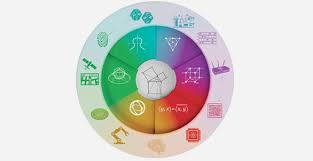How Mathematics Shapes Our Understanding of Disease and Weather
Mathematics is more than numbers and formulas. It is the hidden structure behind how our world works. In Singularity of the Mind, Nicholas Cristiano celebrates math as a universal language that reveals patterns in everything from personal milestones to vast natural systems. His reflections show how mathematical thinking can help us understand two of life’s most unpredictable forces: disease and weather.
Let’s explore how mathematics helps us predict, manage, and make sense of these complex phenomena.
Mathematics and Disease: Making the Invisible Visible
At first glance, disease outbreaks such as seasonal flu or global pandemics can seem random and overwhelming. Mathematics gives us a way to see the logic behind the chaos.
Cristiano highlights how mathematical models form the backbone of epidemiology, the science of how diseases spread. Using statistics and differential equations, models like SIR (Susceptible, Infected, Recovered) help researchers estimate how infections move through populations. These insights guide public health decisions, such as when to roll out vaccines or encourage social distancing, ensuring that resources are used where they are needed most.
Cristiano’s fascination with mathematical patterns reflects this approach. His “Matrix of Life Equation,” which connects numerical relationships in his own life, demonstrates how small individual factors create larger systems. In the same way, one person’s actions can ripple through an entire population during an outbreak.
Mathematics also plays a crucial role at the microscopic level. Computational models and statistical algorithms were essential to projects such as the Human Genome Project, which mapped DNA sequences and identified genetic markers for diseases. From tracking viruses to decoding our genetic code, math transforms invisible biological processes into data we can understand and use to make decisions.
Mathematics and Weather: Predicting the Unpredictable
Weather may seem even more unpredictable than disease, but mathematics helps us find order in its apparent randomness. Cristiano explores how statistical modeling, differential equations, and chaos theory shape our understanding of climate and weather systems.
Forecasting relies on massive numerical models that process data from satellites, sensors, and radar. These models use complex equations to simulate how temperature, pressure, and wind interact. Meteorologists can then predict storms, rainfall, and heatwaves with increasing accuracy.
Chaos theory, often illustrated by the “butterfly effect,” reminds us that even small changes in starting conditions can lead to major differences in outcomes. A slight temperature variation in one region might trigger a storm in another. Mathematics helps us make sense of this delicate balance by offering probabilities where certainty is impossible.
Cristiano connects this to the larger patterns that fascinate him, such as the 93 million miles between Earth and the sun or the repeating cycles in his own life. He sees math as the bridge between natural phenomena and human understanding.
These insights have real-world value. Farmers use seasonal forecasts based on statistical models to plan crops. Cities prepare for hurricanes or heatwaves using predictive simulations.
Mathematics as a Universal Lens
For Cristiano, mathematics is more than a scientific tool. It is a philosophy of connection. The Fibonacci sequence (1, 1, 2, 3, 5, 8…), which appears in the spirals of shells, sunflowers, and hurricanes, demonstrates the unity between nature’s smallest and largest patterns.
He also points to game theory, which examines how individual decisions affect group outcomes. In public health, it explains how personal choices such as getting vaccinated protect entire communities. In disaster response, it helps governments coordinate evacuations and allocate resources efficiently.
Cristiano’s broader message is clear. Mathematics helps us navigate uncertainty. Just as he learned resilience through personal challenges, math teaches societies to adapt, to turn data into decisions, and to transform unpredictability into preparedness.
Mathematics turns abstract ideas into actions that save lives and shape the future. It helps scientists slow pandemics and meteorologists anticipate storms. It bridges human experience and natural law, showing that the world, however complex, follows patterns we can uncover and understand.
As Nicholas Cristiano reminds us, “Mathematics is the foundation of everything we do.” Behind every weather forecast, every medical breakthrough, and every personal insight lies the same universal language: numbers.
Mathematics does not just describe the world. It connects us to it.
Read Singularity of the Mind
Nicholas Cristiano’s Singularity of the Mind offers a unique exploration of how mathematics, science, and spirituality intertwine to reveal life’s hidden patterns. Whether you are passionate about data, philosophy, or personal growth, this book will challenge how you see the world.
Discover more in Singularity of the Mind by Nicholas Cristiano, available now on Amazon.













